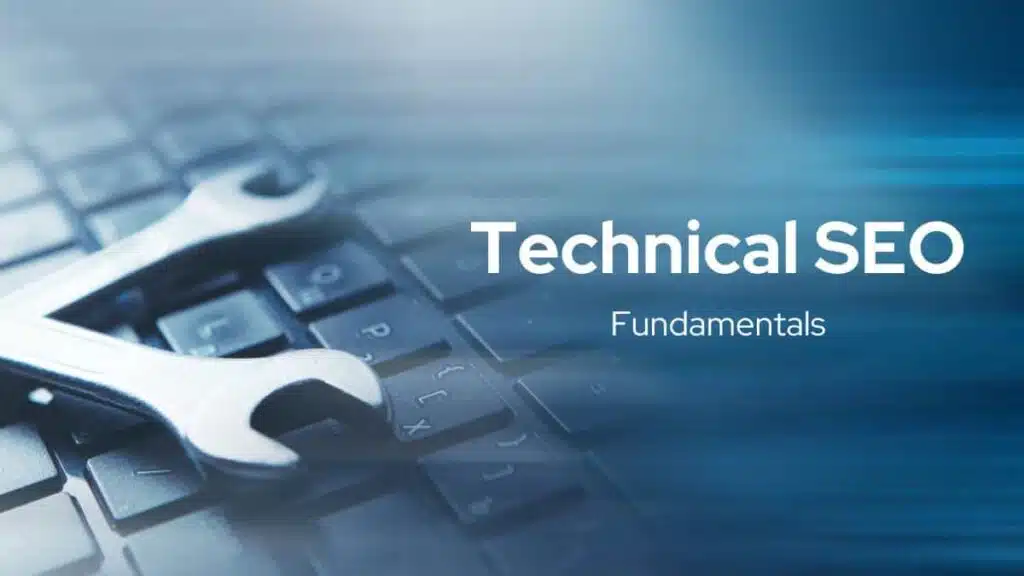Discover technical SEO fundamentals to improve your website’s performance in search engine rankings. From crawling and indexing to optimizing site structure and technical SEO checklists.
Table of Contents
Technical SEO is the method of improving the code and server setup of your website to improve how search engine bots crawl, index, and rank it.
It starts with making sure search engine bots can find your website content. Once detected, ensure that bots will understand the content of your website. You should also ensure that your website is clear from quality issues, such as several mistakes or low-quality information, which make it hard for bots to crawl and understand it.
We are Proadept Academy’s best SEO institute in Kolkata to help you understand technical SEO fundamentals and how you implement proper technical SEO on your website to enhance search engine ranking.
Start Your SEO Journey With Proadept Academy. Learn From Scratch. Enroll Now.
Key Insights on Technical SEO Fundamentals
- Technical SEO optimizes a website for crawling and indexing by search engines, therefore optimizing technical aspects for higher search ranks.
- Website speed is an essential part of technical SEO. Simple designs, optimized images, and fewer redirects can all help to speed up a website.
- Google Analytics and Google Search Console are excellent tools for analyzing site speed and improving it accordingly.
- With the increase in mobile device consumption, it is crucial to make sure that your site is mobile-friendly or has a separate mobile site.
- Transitioning your website to the HTTPS protocol may boost SEO while also providing greater safety and privacy.
- Breadcrumbs and internal links can help enhance site navigation and keep audiences on your site for more time.
What is Technical SEO?
Before we go into the details, let’s clarify the technical SEO definition. Technical SEO is crucial for ensuring that search engines can successfully explore, understand, and index the content on your website. Optimizing technical components can improve the user experience, boost organic traffic, and enhance website performance.
Ignoring technical SEO fundamentals can lead to indexing problems, poor rankings, and reduced visibility in search engines.
Crawling in Technical SEO Checklists
What is Crawling in SEO?
Crawling is the process by which search engine bots crawl the web to discover and systematically index web pages. When a search engine bot crawls a website, it follows links from page to page and collects information about each page’s content, layout, and metadata.

How to Optimize Crawling for Your Website?
Optimizing crawling for your website requires technological changes and strategic planning to ensure search engine bots can find and index your content correctly. Here are some detailed steps you can take to improve crawling, including technical SEO checklists.
XML Sitemap:
- Create an XML sitemap that will give search engines a complete overview of your website’s structure and content.
- Include important pages like your homepage, major categories, and individual features or products.
- Update your sitemap regularly through Google Search Console or Bing Webmaster Tools and submit it to search engines.
Robots.txt:
Use the robots.txt file to communicate with search engine bots and specify which pages should be crawled and indexed. While robots.txt can help prevent unnecessary or vulnerable pages from being indexed, it is important to ensure that it does not inadvertently block important resources. Regularly review and update your robots.txt file to align with your website goals and content strategy.
Internal linking:
- Use a strong internal communication strategy to set up a logical structure and provide smooth navigation for search engine bots.
- Make sure you can navigate through every page on your website that leads to other related pages.
- Focus on anchor text and use descriptive keywords to provide context and relevance to the linked pages.
URL Structure:
- Optimize your URL structure to make it crawler-friendly and user-friendly.
- Use descriptive and keyword-rich URLs that list each page’s content and title in chronological order.
- Avoid long, cryptic URLs with unnecessary parameters or session IDs, as they can confuse search engine bots and make it harder for them to understand your pages.
Important: Consider using URL rewriting methods, such as hyphens used to separate words -Use and eliminate punctuation to create cleaner and more readable URLs that improve crawling and user experience.
Website Speed: Make sure your website loads fast and performs well, as slow load times can negatively affect crawling and indexing. The CSS and Javascript files compressed the images, took advantage of the contextual content, and shared content close to users in geographic usage using Google pages or gtmetrix and more role Monitor and Craling -Promptly address any performance issues to improve productivity and user experience.
By strategically adding to your content, you can distribute authority and PageRank across your website, helping search engines find and index new pages better.
Become an SEO Pro With In-Depth Hands-on Training From Industry Experts. Starts Here Now.
Indexing in Technical SEO Fundamentals
What is Indexing in SEO?
Indexing refers to the process of saving pages from websites in search engine databases. When a page is crawled and deemed relevant, it is added to the search engine index, making it eligible to appear in search results for related queries.
How to Ensure Proper Indexing?
Technical SEO fundamentals to improve indexing include:
Meta tags: Use descriptive metatags, including title tags and meta descriptions, to provide search engines with information about your web page’s content.
Canonicalization: Use canonical tags to specify the optional version of the URL when there are multiple versions of the same page.
Schema Markup: Improve the visibility of high-quality snippets and other SERP elements by letting search engines provide structured data about your content through the use of schema markup.
How to Check for Indexing
Monitoring your website’s indexing status is important to ensure search engines search properly and your pages are included in their index. Here’s how you can view the index with various tools and techniques:
1. Google Search Console:
Google Search Console provides valuable insight into how Google crawls and indexes your site. To view index status:
Navigate to the “Coverage” report beneath the “Index” section.
Here, you can see the number of relevant pages, labels, and any index information found by Google.
Check for errors or warnings reported by Google and take necessary corrective actions.
2. Website: Search Operator:
Using the website: The search operator in Google can quickly display pages listed from your website:
Replace “yourwebsite.com” with your real domain name. This search query will return a list of pages indexed by Google.
By leveraging tools like Google Search Console and implementing technical SEO specifications, you can ensure that your website’s content is effectively crawled, indexed, and displayed in search results for relevant queries. Technical SEO checklists are invaluable in this process.

Site Structure Optimization: Technical SEO Checklists
Why is Site Structure Important for SEO?
A streamlined web design not only improves user experience but also facilitates searching and indexing. A clear and logical layout helps search engine bots understand the relationships between pages and prioritize them accordingly.
How to Optimize Site Structure for SEO?
The following technical SEO checklists will help you optimize your site’s layout:
- URL Structure: Use descriptive and user-friendly URLs that show the content structure and keywords.
- Navigation: Create simple navigation menus and internal links to guide users through your website to search engine bots.
- Mobile optimization: Make sure your website is mobile-friendly and responsive, as mobile engagement is a key factor in ranking search engines.
Conclusion
Mastering the technical SEO fundamentals of crawling, indexing, and site structure optimization is essential to improving your website’s visibility and performance in search engine rankings. By following technical SEO checklists, researching, and applying best practices, you can improve user experience, increase organic traffic, and achieve better results in search engine results pages (SERPs).
Remember, technical SEO is an ongoing process, and staying abreast of the latest developments and best practices is key to improving your website’s search engine visibility.
FAQs
What are the technical SEO fundamentals one should look after?
In the technical SEO fundamentals, the marketers need to check the “technical ABCs” of a website, starting from speed optimization to broken links, ROBOTS.TXT to overall site structure in order to maintain constant SEO performance.
Why technical SEO checklists are so important?
As per the search engine’s choice and user’s engagement, it is important to manage all the technical SEO checklists to give your website a boost for better ranking.
Learn the technical SEO fundamentals with Proadept Academy’s advanced SEO training institute in Kolkata. Check out technical SEO checklists and definitions for a comprehensive understanding.






